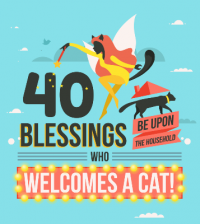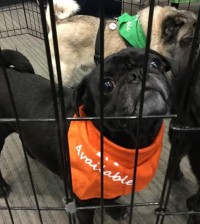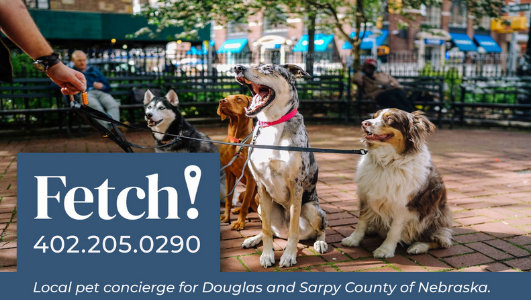- Do you subscribe to Dharma Dog Training’s Newsletter? You should.
- A Unique Campaign from The Humane Society of the United States
- Rabid bats in Omaha- Stay safe, prepared with these tips
- Springtime Activities in Omaha
- Mill Dog Monthly from Bailing Out Benji
- World Spay Day, Legislative Alert in Nebraska
- Attend the Nebraska Rescue Council’s monthly meeting this Saturday
- Five Hard-to-Ignore Reasons to Adopt!
- Paws in Pink to Benefit Breast Cancer Foundation
- VCA, Inc. Acquires MidWest Vet Specialists from Kansas State University
What exactly does “No Kill” mean?

In today’s world of sheltering, there are two ways of operating.
The first is the comprehensive approach. Most shelters use this approach and it involves some things many of us don’t like about animal control and sheltering. Euthanasia for the sake of maintaining a manageable population, deeming animals untreatable or unadoptable, not being sure if an animal is going to be given a fair shot. This way of operating is the best way to operate efficiently and with concern for the budgetary restraints all shelters face, but it’s end result is a bunch of dead animals. Not fun. Many understand that this can be seen as a necessary evil; others are completely opposed to killing any animal and preventing it from potentially finding a home. In a perfect world, no animals would have to be euthanized. Our world is not perfect.
The second approach is operating under the no-kill philosophy. There is a bit of confusion amongst the masses on what “no-kill” actually means.
No-kill does not mean “no animals will be euthanized.” Typically, a no-kill shelter will treat and adopt 90 percent of its animals. That number will seem high, low, or about right to different people, but considering the number of animals that are put down on average each year in shelters, 90 percent is a large number.
Why do even no-kill shelter animals need to be put down? Here’s an example: a 19-year-old cat comes to the shelter, has cancer, needs another expensive operation, can’t see, can’t pee, won’t eat, etc. This animal might be called unadoptable because of the nature of its condition. That kitty would likely be relieved of its pain. The idea that any would have to be put to sleep is hard to deal with, but the reality is we can’t save them all no matter how much we want to.
The Best Friends Blog says this about no-kill: “Ultimately, no-kill means ending the killing of shelter pets as a means of population control.” The 90 percent goal is almost always reached for the shelters Best Friends works with, so the no-kill school of thought is not impossible, just difficult (but worth it).
To the question of “What does no-kill mean” – 90 percent is one answer. Not using euthanasia as means of population control is another. There are several myths about the words and what people perceive the movement as, but Best Friends answers common questions in this helpful article.
Read the entire story at the link above, but here are the myths Best Friends shoots down as incorrect assumptions:
1. It can’t be done. An open-admission no-kill shelter doesn’t exist.
2. If one shelter is no-kill, another facility in that community has to do the dirty work of killing the excess animals.
3. With no-kill, animals are allowed to suffer instead of being humanely euthanized.
4. No-kill sheltering means an increased length of stay, causing animals to languish in the shelter environment.
5. No-kill shelters “dump” cats instead of caring for them.
6. Unadoptable and dangerous animals are released to the public without any screening.
7. No-kill sheltering is just a better-marketed version of hoarding. Animals are piled up in terrible conditions, leading to more hoarding cases because there is no screening of rescuers or adopters.
Look for more news and information from us concerning the growing number of no-kill shelters and rescues popping up around the country.
Related Posts
Latest News
-
Join Us at Pick A Pooch 2025: A Fun-Filled Weekend for the Whole Family
A Fun-Filled Weekend for Pet Lovers and Families Alike Mark...
- Posted 1 year ago
- 0
-
Beardmore Presenting Sponsor At This Years Pick-A-Pooch event
🐾 We are thrilled to announce that Beardmore Subaru is...
- Posted 3 weeks ago
- 0
-
How Having A Pet Can Change Your Life
Having a pet can open your heart in ways that...
- Posted 2 months ago
- 0
-
How To Improve The Life Of Your Senior Pet
Do you have an elderly fur baby and want to...
- Posted 3 months ago
- 0
-
Springtime Activities To Enjoy With Your Furry Friends
Are you preparing for warmer weather and want some ideas...
- Posted 4 months ago
- 0
-
Pros And Cons Of Microchipping Your Pets
Have you considered whether your pets should be microchipped and...
- Posted 4 months ago
- 0
-
The Best New Fun Toys For Dogs And Cats
The Best New Fun Toys For Dogs And Cats Did...
- Posted 5 months ago
- 0
-
Heartfelt Ways To Show Your Pet You Love Them
Did you know there are more ways to show your...
- Posted 6 months ago
- 0






















You must be logged in to post a comment Login